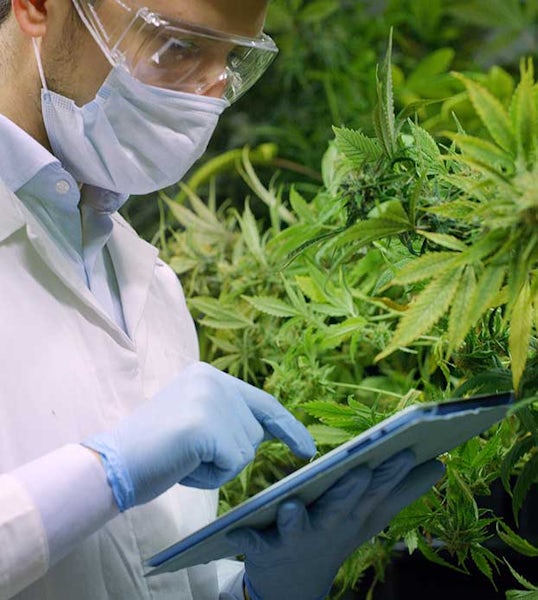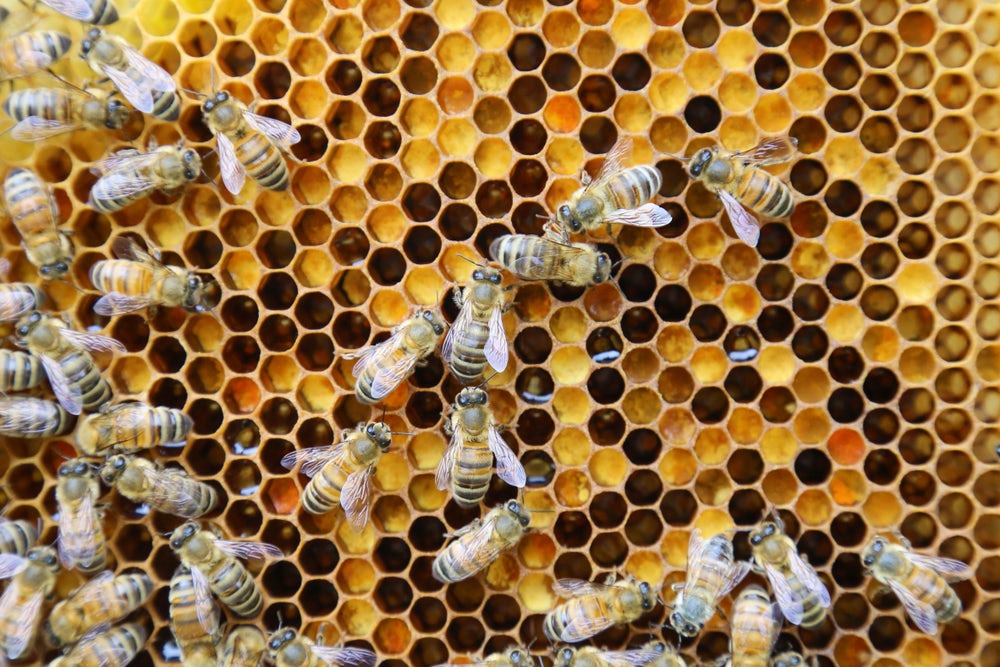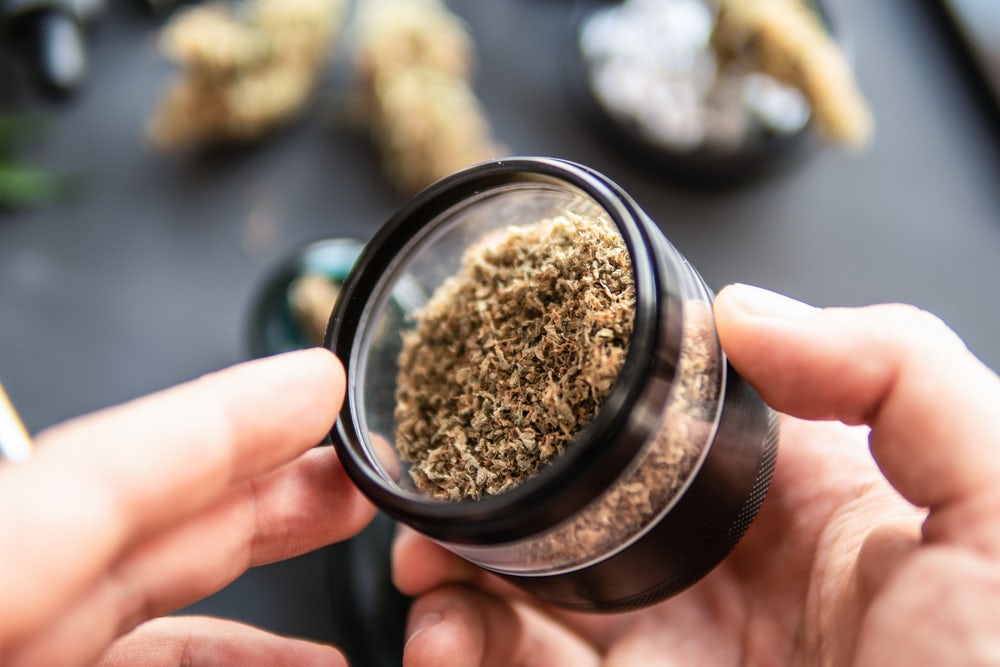Determining the ideal strain of cannabis can be tricky, which is exactly why Certificates of Analyses are so important. A Certificate of Analysis (CoA) is a document provided by a third party (generally a lab) that analyses some of the various compounds found in your cannabis. This can include outlining a strain’s cannabinoid and terpene profile as well as testing for other crucial factors like pesticide residues or heavy metals. You can also find other information in a CoA such as manufacturer information, testing method used, and batch data.
➤ Get your medical card now with The Cannigma Medical
While not all manufacturers are not required to provide CoAs, you may be able to find them available online. Your local budtender may also be able to point you in the right direction. Some products even have scannable QR codes that link directly to a CoA report. You can get CoAs for many different cannabis products including flower, tincture and even edibles.
Transparency and Impartiality
The ultimate function of a CoA is to ensure a product’s content matches what was advertised, particularly with regard to potency and safety. As such the first element to consider when reading a CoA is who the test was conducted by. This information can be found at the top of the first page.
You should always check to ensure the company who performed the test is not the original manufacturer as this is the best way to ensure independence and impartiality.
Understanding potency
You can determine potency by evaluating the concentrations of each cannabinoid present in the sample.
Most CoAs will list cannabinoids in a column on the far left. This column may be labeled, “ID,” “Analyte,” or even just the name of the cannabinoids themselves. Both major cannabinoids (THC or CBD) as well as “minor” cannabinoids like THCA are reflected here.
To the right of this column you’ll find potency results. Potency is determined by measuring the concentration of cannabinoids present in terms of total percentage by weight (mass). This can also be expressed as cannabinoid concentration in milligrams (mg) and may be featured in a column titled “Conc” (short for concentration).
One quick note on how THC and CBD levels are reported. Most labs don’t heat cannabis samples before testing them, so the THCA has not yet been converted into THC, a process called decarboxylation. Usually, labs will only predict the THC levels that will be in the final product should it be decarboxylated completely. For example, in the examples below, the lab has multiplied the THCA levels by a conversion factor to account for the decarboxylation process, predicting what the THC levels will likely be even though the majority of it is still THCA.
Terminology
You may also spot a few specialized terms in a CoA. These include:
BLQ
Short for “below level of quantification,” this term is used to denote concentrations so small they do not meet the qualifying threshold for cannabinoid content.
LOQ
Short for “limit of quantification,” this is the smallest concentration that can be accurately quantified.
LOD
“Limit of detection,” or LOD, is the smallest amount of cannabinoid(s) that can be detected by the instrument.
Loss on drying
Many CoAs also provide information on the water content of a strain. This can be expressed as “moisture method,” “moisture content” or “loss on drying.” Loss on drying tests for the percentage of water content in the final product.
Contaminant Analysis Terminology
This analysis tests for the presence of any possible contaminants. A few common ones to look out for include:
Microbial contaminants
Generally bacteria, mold, or even yeast. Predetermined contaminant limits are established for each, i.e. “(Limit: <500,000 CFU/g)”. Most test results simply list “pass,” “fail,” or “absent” as results.
Aflatoxins
Aflatoxins are a type of mycotoxin produced by certain types of molds or fungi. Aflatoxins are very dangerous and may be potent carcinogens, which is why you definitely want to ensure your cannabis has no aflatoxins in it.
Testing for aflatoxins is mandatory in Canada under the Cannabis Act. In the United States, testing for Aflatoxins is contingent on the state you live in — some require testing while others do not.
Heavy Metals
Many CoAs also test for the presence of heavy metals as cannabis can be a bioaccumulator. These can include mercury, arsenic, cadmium, and lead. Any amounts of heavy metals present will be listed here.
Pesticides
CoAs often test for a variety of pesticides or plant growth regulators (PGRs) commonly used on cannabis.
Residual solvent screen
You may also encounter the term “residual solvent screen” on some CoAs. This term tests for the presence of any solvent left over from the extraction process. Common solvents include butane, ethanol or hexane. This is relevant for extracts, including oils and vapes, but not dry flower.
What to look for in a contaminant analysis
Limits for each type of contaminants are established. For instance under “heavy metals” some CoAs will list heavy metal limits as 1.5 PPM (parts per million). Some analysis may list limits as PPB (parts per billion). A corresponding section will list pass/fail results.
You should always ensure that your cannabis has passed all of the tests for contaminants (“pass”). You’ll also ideally want samples that list “ND” (none detected) under heavy metals. Three classes are used to denote the level of danger associated with each solvent. You can learn more about what to look for in solvents here.
Microbial levels are a little more tricky. Some countries, like Canada, require licensed producers to establish safe microbial limits. In the United States, microbial limits are up to the states themselves, if they set any. You can find more information about microbial levels in the US via this guide produced by the Cannabis Safety Institute.
Examples
East Fork Cultivars is an Oregon based, organic CBD farm. They provide detailed CoAs for every batch of each strain that goes to market.
Here’s a report for a batch of CBD-rich Ringo’s Gift. Testing information pertaining to the lab, batch number and analysis date can be easily located at the top of the report. The CoA then dives into a section on potency. Eleven different cannabinoids (“analytes”) are analysed, with their concentrations reported on the right-hand side as percentages. A subsequent section on “safety” states pesticides are within limits. The report then dives into a detailed terpene profile and pesticide breakdown. Limits are determined based on a simple pass/no pass basis.
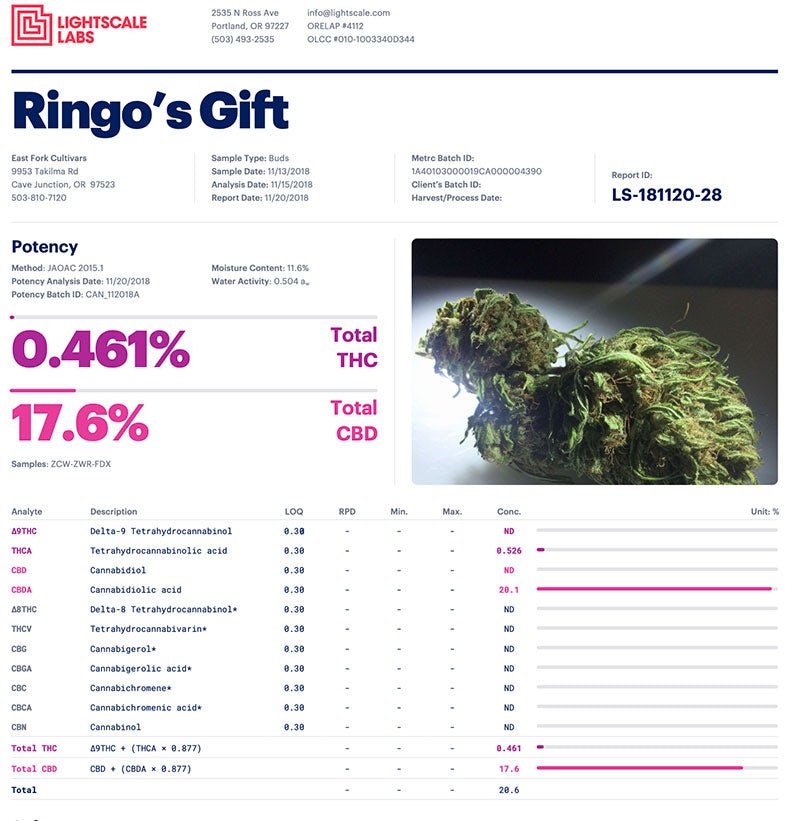
Canada-based producer Aurora also provides certificates of analysis for its strains. Here’s one for the company’s Blue Dream varietal, dubbed “Ambition.”
Like East Fork’s CoA, this CoA also begins by listing relevant lab and manufacturer information up top. Overall potency of cannabinoids (“total THC equivalents”; “total CBD equivalents”) is listed first, expressed as a percentage of overall weight. The report then dives into minor cannabinoid concentrations before analyzing terpene content. A contaminant analysis follows along with notes on details of testing.
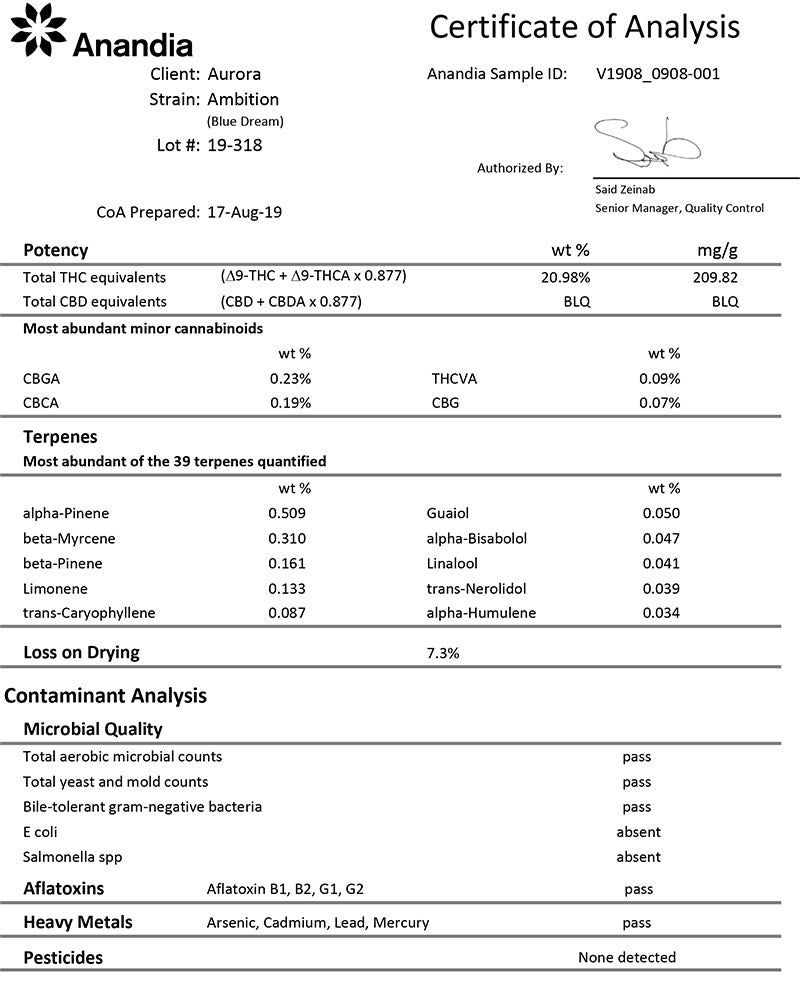
A CoA can be a valuable tool to ensure that your cannabis product is up to the standards you expect. However, they should be assessed with caution as testing requirements vary by jurisdiction and product type. It’s important to keep in mind that a CoA does not report every component of a cannabis product. Start low, go slow, and trust your own reaction to every product you try.
Sign up for bi-weekly updates, packed full of cannabis education, recipes, and tips. Your inbox will love it.

 Shop
Shop Support
Support